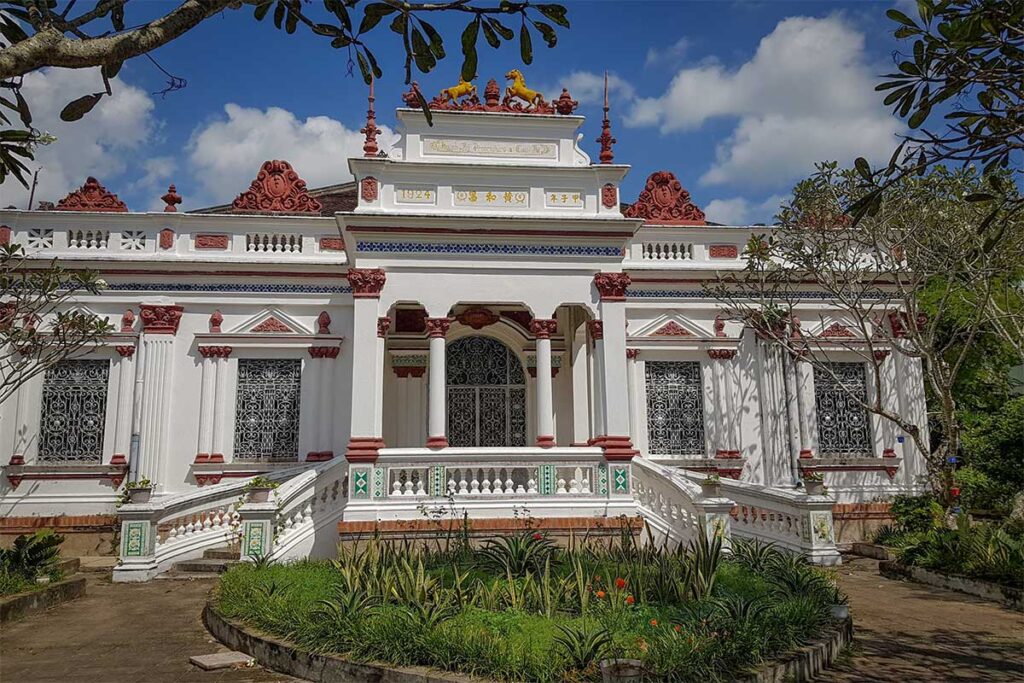Brief history of Huynh Ky Ancient House
Huynh Ky Ancient House, often referred to as Cau Ke Ancient House, was built in the early 20th century by the Huynh family, one of the wealthier Chinese-Vietnamese households in the region. The family head, Huynh Ky, held an official position and used the residence as both a private home and a symbol of status in Cau Ke.
The house was not intended as a palace or public space but as a family mansion that reflected both prosperity and cultural identity. Its design combined Western architectural influence, introduced through French colonial presence, with Eastern traditions that were important to the family.
In 2011, the building was officially recognized as a provincial cultural and architectural monument by Tra Vinh authorities. Today, it stands as a reminder of the social and cultural landscape of Tra Vinh in the early 20th century, when trade, wealth, and a mix of traditions shaped life in the Mekong Delta.
Architecture & Highlights
1. Exterior design
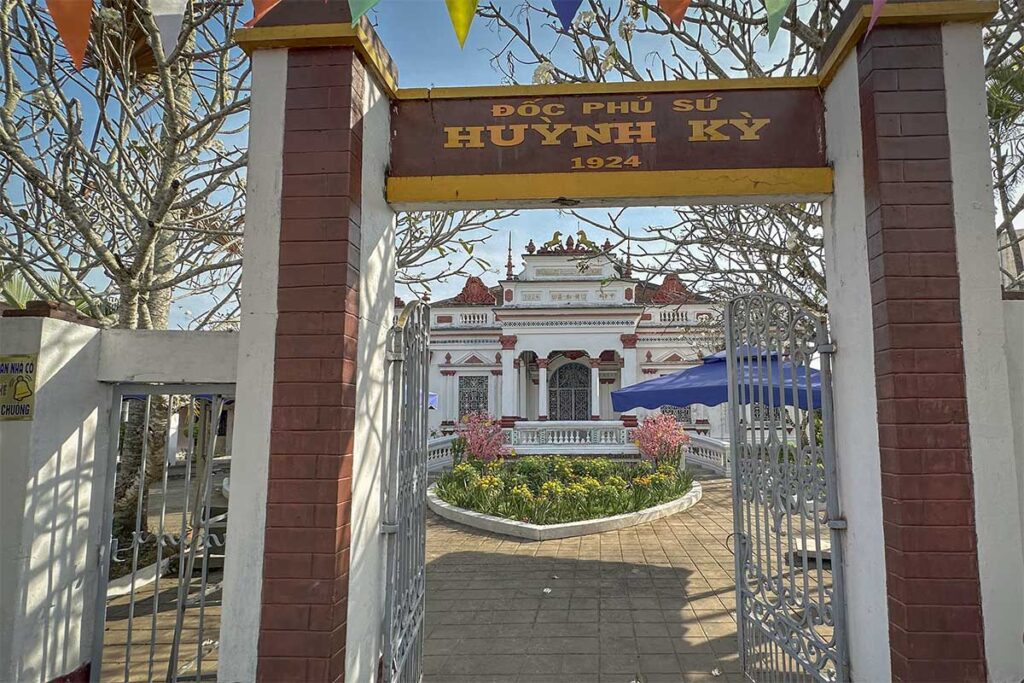
From the outside, Huynh Ky Ancient House (Cau Ke) looks more like a colonial mansion than a traditional Vietnamese home. Its white facade with red decorative details and a grand triangular gable shows the influence of French architecture, while the tiled roofs and courtyard garden keep it grounded in local style.
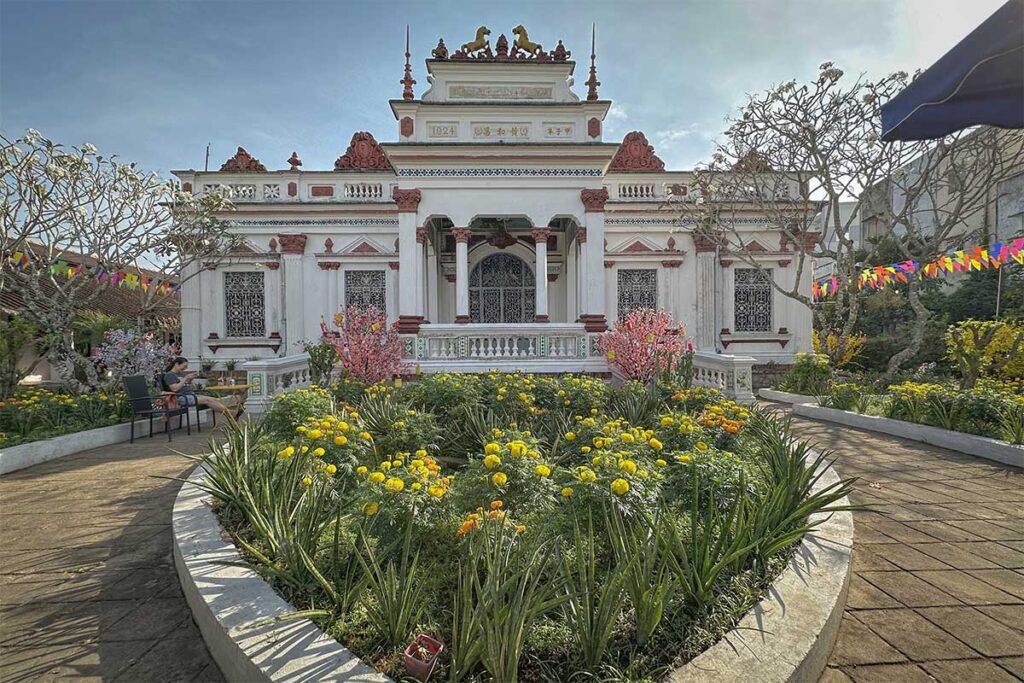
The iron window grills, carved reliefs, and floral motifs add elegance. A fence and gate mark the property, with a wide yard in front used for flowers and plants. Side wings and a back house are connected to the main building, giving the compound a more spacious and balanced layout.
2. Interior features

Inside, the house feels both European and Vietnamese at once. Tall columns painted in green and ochre tones divide the main hall, their design inspired by classical European styles. Patterned ceramic floor tiles stretch across the rooms, still holding their colors after decades.
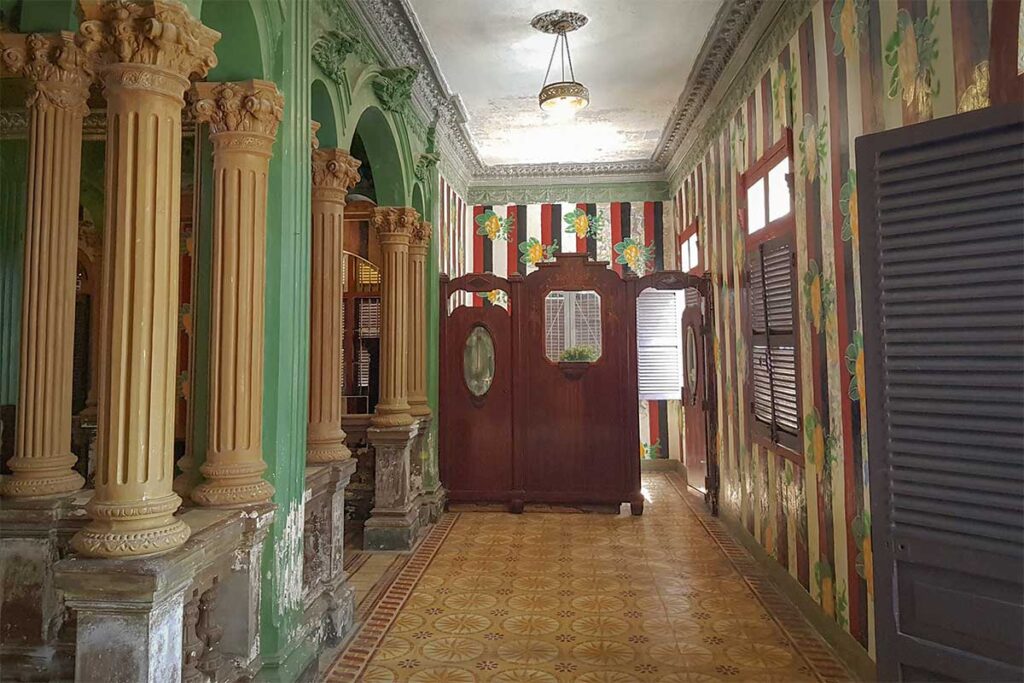
The walls are decorated with bold stripes, floral motifs, and painted borders that make the rooms feel colorful and slightly formal.
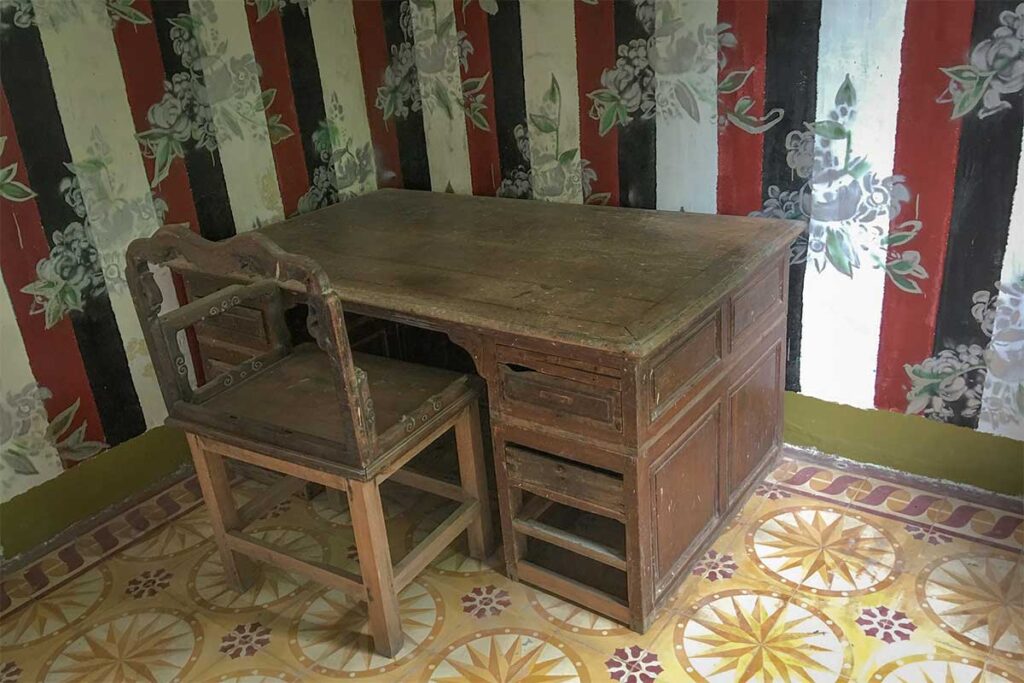
Antique wooden furniture — carved chairs, sofas, and a simple writing desk — give a glimpse of daily life in a wealthy household from nearly a century ago.
3. Artistic details

What stands out most are the painted ceilings and murals. One ceiling panel features a dragon motif surrounded by decorative patterns, symbolizing power and prosperity.

Other murals show landscapes, trees, boats, and village scenes, mixing Eastern symbolism with Western painting techniques. Staircases and balconies are decorated with ceramic tile inlays, adding bright detail to otherwise muted surfaces. These artistic touches make the house more than just an old building — it was clearly meant to impress guests with its style and sophistication.
4. Atmosphere today
Walking through the house today, you get a mix of grandeur and faded charm. Some walls are weathered, tiles are mossy, and the paint has dulled in places, but this only adds to the sense of authenticity. Unlike heavily restored sites, Huynh Ky Ancient House feels like stepping into a place where time has slowed down. It is not polished, but that is part of its character — you see both the elegance it once had and the rustic beauty it has now.
Practical visiting information & Tips
Location & Directions
Huynh Ky Ancient House, or Cau Ke Ancient House, is located in Cau Ke Town, about 30 kilometers west of Tra Vinh City. The easiest way to get there is by motorbike or private car, either on your own or as part of a local tour. The house is pinned on Google Maps, but visitors often mention that it can be tricky to find, as small rural roads and canals may not always match the map exactly. Allow some extra time for wrong turns, and don’t hesitate to ask locals for directions if needed.
Opening hours & Entrance
Google Maps lists the opening hours as 10 AM to 3 PM, but in practice, this is not always reliable. Since the house is not a major tourist site, there’s a chance you may arrive and find the doors closed, especially if no staff or caretakers are around.
Entrance fee
There is a small fee to tour the house and it’s best to bring a little cash.
Facilities & Conditions
Unlike more established attractions, Huynh Ky Ancient House does not have on-site facilities such as cafés, souvenir shops. Occasionally, you may find small stalls outside selling drinks or snacks, but don’t count on it. Parking is possible in front of the property. Inside, expect a house that shows its age — walls are faded, and some parts feel worn down, but this is also what gives the place its rustic atmosphere.
Is Huynh Ky Ancient House worth visiting?
Huynh Ky Ancient House is one of the few surviving colonial-era mansions in the Mekong Delta, which already makes it unique in a region better known for pagodas, floating markets, and river scenery. Its blend of French-inspired architecture and Vietnamese decorative elements sets it apart from the simple rural houses around Cau Ke.
That said, travelers who have seen the grand colonial buildings of Hanoi or Ho Chi Minh City should keep expectations realistic. This is a provincial heritage home — charming and interesting, but not on the same scale as the major colonial landmarks of Vietnam’s big cities.
If you are already visiting Tra Vinh, the house is worth stopping at, especially as part of a broader itinerary that includes Khmer pagodas, Ba Om Pond, or Con Chim Islet. However, it’s probably not worth a long detour on its own. For travelers passing through Cau Ke or exploring Tra Vinh’s cultural side, it makes a pleasant, one-hour visit to balance out the temples and countryside.
